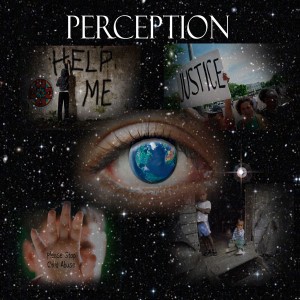Special Topics in Addiction and the Humanities: Music Therapy for Chemically Dependent Youth
Editor’s Note: The Division on Addiction has recently begun a
partnership with the Healing Lodge of the Seven Nations, a residential chemical
dependency treatment center for adolescents located in Spokane, WA. The Healing
Lodge provides innovative treatment to both Native and non-Native youth that
incorporates Native American culture in the healing process. One of the Healing
Lodge's most recent treatment innovations is Abstract Music, a program that encourages
residents to express their thoughts and feelings through music. In 2011, that
program won the "Innovative Program of Year” award from the Washington
State Department of Behavioral Health and Recovery and an honorable
mention in the SAMHSA-sponsored iAward program. That same year, one of the
program participants placed second in the annual Musicares contest, run by the
Grammy Foundation; and the program’s founder, Rickey “Deekon” Jones, was a
finalist in President Obama’s Native Youth Challenge. Deekon first implemented
a version of this music program in 2005 at the Boys & Girls Club in Lapwai,
ID.
This week, the BASIS is publishing a contribution by Deekon about Abstract Music.

Music is the pyramid of
the spirit. In the ever elusive quest for balance, it is music that maintains
mind, body and soul by nourishing the creativity of the brain, allowing the
anatomy to unwind and permitting the soul to grow with confidence and build
social relationships. These qualities are vital in the struggle against the
addictive process; and music can help shape emotions and provide a path to the
fundamental struggles that shape our moral character.
In my work with chemically
dependent youth from the ages of 13-18 years old, I strive to help residents
achieve a genuine response to treatment, one that includes a transformational
shift in their delicate, impressionable social lives. The therapists here at
the Healing Lodge use experiential therapy as well as utilizing Dialectical
Behavior Therapy (DBT). But recently, the rate of runaways, behavioral
discharge and lack of engagement in treatment were not where the establishment
wanted to be. We wanted more innovative, more effective methods to reach the
youth in a profound way that will fundamentally boost everyday function.
We conducted a survey with
all of the residents, male and female, about the most influential commodities
in their lives. The one recurring theme in each of the residents lists was
music. With this information, I spoke to the residents collectively and asked
if they would like to create their own music and tell their story. The response
was very hesitant and the consensus was that they have no experience in making
music or singing, so if they were to attempt, it would have to be Hip Hop. The
Hip Hop genre, as told by the residents, could express their troubled life
story of struggle and misunderstanding. Plus, it did not require a beautiful
singing voice. This gives an equal opportunity to everybody who participates.
The methods that I am
currently employing are fusing together Music Therapy, as conventionally known,
with Chemical Dependency Counseling, Psychology, and Experiential
Therapy. Bringing the unconscious issues, needs, or coping strategies to a
conscious level empowers the individual to make a choice based on the new
conscious information that is obtained.
And our residents do need to learn
to make new choices. The psychiatrist Floyd Garrett said that “Addictive
fascination and fixity of interest have been justly compared to the more
commonly known stage of romantic or infatuated love in which the lover thinks
constantly of the beloved and pines and suffers when not in their presence”
(2005, para. 5). These emotional memories of the “beloved” are triggers that
tell a chemically dependent individual to use, based on a particular smell,
sound, feeling, or visual memory associated with “pleasure” from the drug of
choice.
The amygdala, located within the
limbic/paralimbic neural circuitry, could play a role in this process. Koelsch (2010, p. 131) describes the
amygdala as important in “the
initiation, generation, detection, maintenance and termination of emotions that
are assumed to be important for the survival of the individual. Several
functional neuroimaging and lesion studies have shown involvement of the
amygdala in emotional responses to music (Koelsch, 2010). In our program, we
try to use music to change the way the brain automatically associates the drug
of choice with positive emotional triggers, or at least make the residents more
aware of their triggers.
The program has shown
promising results in length of stay, engagement and success rates. We are
looking to further the research by collecting more thorough success rate data (such
as by breaking success rates down according to age, sex, ethnic background
etc.) to better understand the full potential of the therapy. We might also use
brain scans to get a fuller picture of how music changes those neural pathways
involved in emotions and addiction. The positive impact of the program is
reaching far beyond the walls of the facility. The goal is to open the doors of
communication between parents and their children even before experimentation
with drugs and alcohol takes place. The preventative aspect of this program is
not being overlooked.
— Rickey
"Deekon "Jones
Note: The students of this program have
recently produced a CD of their music, which can be purchased here.
References
Garrett, F. P. The addictive process. Retrieved January
17, 2013, from http://www.bma-wellness.com/addictions/addictions.html.
Koelsch,
S. (2010). Towards a neural basis of music-evoked emotions. Trends in Cognitive
Sciences, 14(3), 131-137.
